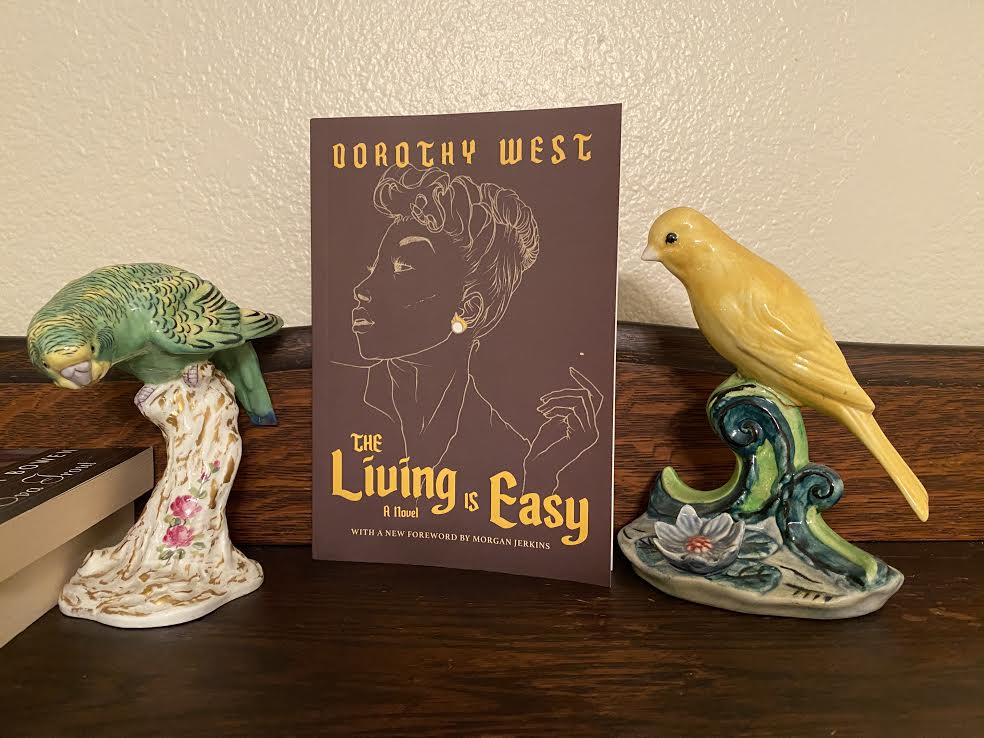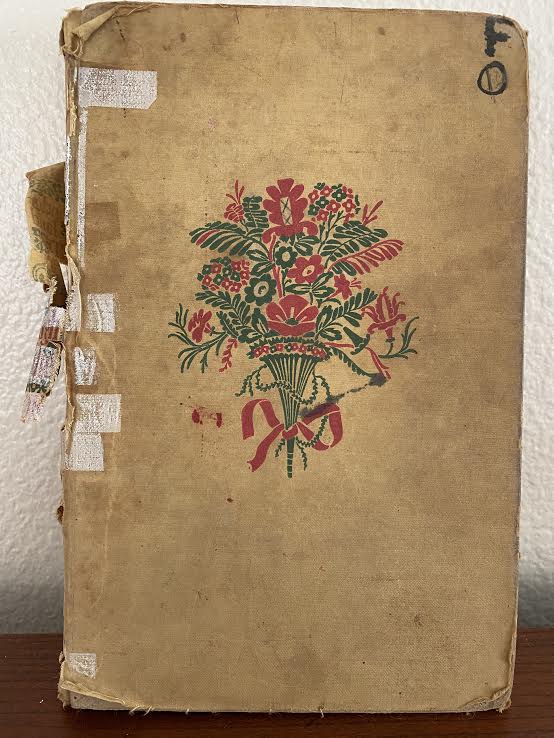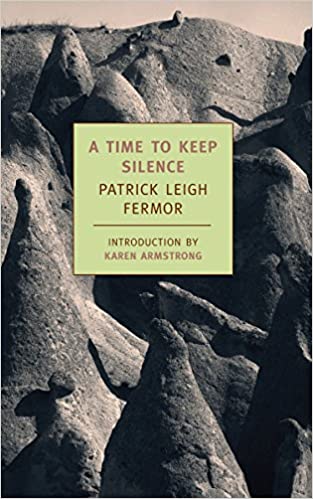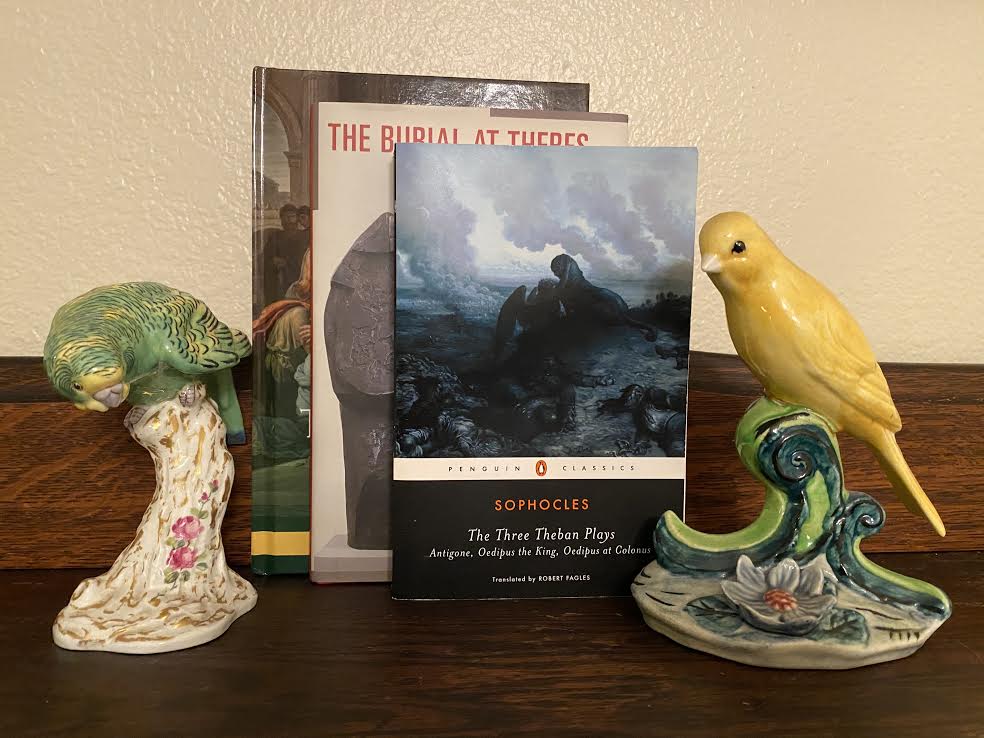Ah, dear readers, it’s January time, if only barely. Snowdrops! New beginnings! New Year’s resolutions by one and all (statistically, BTW, these are generally abandoned by January 17th or so). As I’ve observed from happily reading many very interesting January posts, most of you have already lined up your reading schedules and challenges for 2021, which we all devotedly hope will be much, much better than the annus horribilis we’ve just survived. Being as usual several weeks behind the curve, I’m finally deciding on my own goals for 2021. Primary among them is, once again, Karen’s Back to the Classics Challenge. This is one of my very favorite bookish challenges; it was even the subject of my very first post when I started blogging a couple of years ago. The fact that I’ve not managed to complete the Classics Challenge in either of the two years in which I’ve participated is, admittedly, just a teeny bit discouraging. On the bright side, however (and if you’ve read my blog, you know that I’m determined these days to be an optimistic little ray of sunshine) I’ve had a great deal of fun with the Classics Challenges, which have prodded me into reading some wonderful books that I would have otherwise missed (thanks to the Challenge, for example, I finally completed Sylvia Townsend Warner’s The Corner That Held Them, one of my favorite books from last year). So, dear readers, this January I was torn — should I attempt once more to rise to the Classics Challenge? Or should I bow to realism and just let it go? My first impulse, I must admit, was the latter, as I felt spiritually a bit like this poor fellow:

It was not for nothing, however, that I’m the product of a red-blooded, all-American childhood (southern U.S. variety), stuffed from infancy with tales of “Little Engines That Could” and nursery jingles singing the praises of itsy-bitsy spiders who defied monsoons in order to climb those old water spouts time and again. Good old U.S.A. cultural norms, not to mention Janakay’s Mom, did not, in other words, produce a quitter! Moral fiber will out, dear friends, as once again I respond to the siren call of the Classics, a living example of hope triumphing over experience.
In contrast to 2020, when I had a fair amount of difficulty in choosing my selections, this year my list has practically made itself (having so many unread books from previous challenges has certainly been helpful in this regard). In relatively quick order I decided on various novels taken (mostly) from this wonderful pile:

If you’re interested, I’ve broken down my selections into the Challenge’s separate categories below, indicating at times my most likely alternate if my primary choice doesn’t work out.
19th century classic (published 1800-1899): Henry James, The Spoils of Poynton


After a rather unpromising introduction to his work, I eventually became a real devotee of Henry James’ fiction. Sadly I’ve neglected James for several years now, with the exception The Tragic Muse, which I reread in my first year of blogging as a result of that year’s Back to the Classics Challenge. What better time to amend this neglect of an old favorite than 2021? Since I’m not quite up to James’ late, very great masterpieces (it takes a lot of energy to tack The Golden Bowl or Wings of the Dove), I decided on The Spoils of Poynton. Published as a magazine serial in 1896 and republished in book form the following year, Poynton just makes it under the Challenge’s 1899 cutoff date for a 19th century classic. Although it’s generally considered a lesser work in the James canon, there’s plenty of content in this tale of the ruthless struggle between a possessive dowager and her hated daughter-in-law over the family’s art collection.
20th Century Classic (published 1900-1971): Virginia Woolf’s Night and Day

Although I’m entirely sure it’s my own fault, Virginia Woolf and I have never quite gotten on with each other. I’ve read a few of her essays and a novel or two (I actually liked Mrs. Dalloway) but . . . don’t we all have our little list of writers whom we admire without quite being enamored of them? Still, I’ve never felt that I gave dear Virginia a fighting chance to win my regard and I’ve always felt the poorer for it. In an effort to make amends, I thought I’d read one of her earlier novels, written when her modernist tendencies were just beginning to surface, as a way to ease myself into her work. If my Woolf jinx continues unabated, however, I’ll probably read something by Pamela Hansford Johnson, since Ali’s delightful review of Johnson’s The Last Resort (published in 1956) reminded me I had never read anything by this oh-so-interesting writer.
Classic by a Woman Author: Jean Stafford’s The Catherine Wheel
Any Jean Stafford readers out there? I must admit Ms. Stafford was one of those writers who was little more than a vaguely familiar name to me; I was aware that she was once married to someone famous (poet Robert Lowell as it turns out); that she was primarily a short story writer; and that her best known novel was The Mountain Lion, a coming of age tale that I have previously had no desire to read. My rather dismissive attitude changed last month when I discovered a collection of Stafford’s novels while browsing in one of my area’s few open and accessible bookstores (everyone masked and socially distancing, of course, but there’s a reason why my area has a very high infection rate). I decided on The Catherine Wheel (it was a close call between that and Stafford’s Boston Adventure), largely because I loved the name (never say, dear readers, that I choose my books for less than profound reasons). I began reading it a few days ago and I’m already hooked — Stafford is a marvelous writer! I plan on dipping into her short stories at some point (she won a Pulitzer Prize for her Collected Stories in 1970). Can The Mountain Lion be next?

Classic in Translation: Magda Szabo’s Katalin Street (originally published in 1969), appearing on my list for the second year in a row
I first became aware of Magda Szabo a few years ago, when I read the NYRB’s edition of her newly translated novel The Door, the story of the complex relationship between two very different women. As I wasn’t very interested in translated literature at the time, I was amazed at how much I enjoyed it. Since this made me determined to read Szabo’s other translated works as time and energy allowed, her Katalin Street was a natural for last year’s Challenge list. I really, really intended to read it last December but . . . I’m afraid Logen Nine-Fingers jumped out of Joe Abercrombie’s fantasy trilogy and murdered my time! Katalin Street was a natural for the “Classic in Translation” category in this year’s Challenge (besides, it has wonderful cover art).

Classic by BIPOC Author: Eileen Chang’s Love in a Fallen City
In selecting something for this category, it was difficult to ignore the richness of African-American fiction, not to mention my several unread novels by the great Toni Morrison, but . . . . Thanks to the NYRB Classics Club I’ve had a couple of novels by Eileen Chang gathering dust on my shelf. Both look extremely interesting and I’ve been dying to give at least one of them a try; perhaps this year’s Challenge will provide the impetus to get me going. How could I resist a title as romantic as Love in a Fallen City? This collection of stories was translated into English and published by NYRB Classics only in 2006; because the stories were originally published in Hong Kong & China in the 1940s, however, they fall within the Challenge’s time parameters.

If I don’t get on with Chang, my alternate choice for this category is

Classic by a New-To-You Author: Arnold Bennett’s The Old Wives’ Tale (pub. 1908)

Although I’m hardly versed in Virginia Woolf’s critical writings, I do recall that she had a rather low opinion of her very prolific contemporary Arnold Bennett, whose works of realistic fiction were wildly popular among the reading public of the time (if you’re interested, Woolf’s very critical essay discussing Bennett’s work, “Mr. Bennett and Mrs. Brown,” is available online). Since I’m quite fond of big, sprawling realistic novels, chock full of details about their protagonists’ daily lives, I’ve always thought I’d give Bennett a try. The Old Wives Tale, considered one of Bennett’s best novels, is a natural choice, particularly since it’s been gathering dust on my shelves for a good many years. I was also attracted by Bennett’s concept of showing the contrasting lives of two very different sisters, who began life in the same small provincial town in the English Midlands. Besides, if I read Bennett’s chief critic this year, it’s only fair that I also give the target of her criticism a whirl, n’est-ce pas?
New-To-You Classic by a Favorite Author: Elizabeth Bowen’s Eva Trout

I’ve been a little hesitant in the past to claim Elizabeth Bowen as one of my very favorite authors; as I’ve pointed out before, she can be a little rarefied at times for my tastes. Since I’ve read eight of Bowen’s ten novels, however, I suppose it’s time for a little self-honesty, which requires me to admit that, yes, she is definitely one of my “go to” writers!
Classic about an Animal or with an Animal in the Title: Theodore Storm’s The Rider On A White Horse

One of the bright spots in my rather lackluster 2020 reading was discovering the works of Theodor Fontane, the late 19th century novelist who doesn’t seem to be as widely read outside his native Germany as he perhaps should be. Although I failed to review either Effie Briest or On Tangled Paths, I very much enjoyed them both and was left with a desire to explore more 19th century German writing. This collection of short works by a major 19th century German writer seems an ideal way to do so.
Children’s Classic: Lewis Carroll’s Through the Looking Glass

Through some quirk of individual taste, the fantastical, upside down world of Through the Looking Glass appealed to me more as a child than the equally fantastical world of Alice’s Adventures in Wonderland. Perhaps I liked the poetry better (it’s hard to beat “The Jabberwocky,” especially with Tenniel’s illustrations); perhaps it was the motif of the chess game or the powerful suggestion at the end that reality may not be what one thinks, that Alice herself may be nothing but a figment in someone else’s dream. Isn’t it amazing how we let kids read such subversive stuff? This won’t be my first re-read of this childhood classic, but it will be the first in many, many years. If the mood takes me, I may get all intellectual about it and check out some scholarly exegesis or other (I’m sure the chess game has been the subject of far too many dissertations) but I primarily intend to see if the magic still holds.
Humorous or Satirical Classic: Saki’s The Unbearable Bassington (pub. 1912)

I was all set to go with Evelyn Waugh’s Scoop (pub. 1938) as my entry in this category; for several years now I’ve felt it was a book that I really ought to have read by now (that “ought,” dear readers, is precisely why Scoop remains unread on my shelves. Such is perversity). Fortunately, I remembered — Saki! Although I’ve read and (immensely) enjoyed his short stories (have you read “The Open Window”? If not, go and do so immediately!) I’ve never attempted The Unbearable Bassington, his only novel. In the unlikely event that Bassington doesn’t work for me this year, well, it will be on to

Travel or Adventure Classic (fiction or non-fiction): something by Patrick Leigh Fermor

For one reason or another I’ve generally avoided reading travel literature, although when I’ve done so I’ve generally enjoyed it. Even I, however, am aware that Fermor is one of the genre’s greats. In settling on my choice for this category I was delighted to discover Fermor’s 1957 work, A Time To Keep Silent, recounting his journeys to some of Europe’s most ancient monasteries, as I’ve been interested in monasticism and the contemplative life since I first read Kathleen Norris’ The Cloister Walk many years ago. A close runner-up for this category is Fermor’s The Traveler’s Tree, an account of his travels through the Caribbean Islands in the late 1940s (one of my dream trips is to Trinidad although, alas, I may have missed my chance of ever visiting its famed Asa Wright Nature center).
Classic Play: Sophocles’ Oedipus Rex

My first impulse for this category was to choose Webster’s Duchess of Malfi, which has seemingly become a permanent resident on my TBR list (I failed to read it for at least one prior challenge). I soon realized, however, that I really wanted to re-read Sophocles’ Oedipus Rex. I’ve always been fascinated by this story and the questions it raises; do we choose our own lives or do we each, like poor Oedipus, have our own place “where three roads meet” in which we unknowingly walk the path that fate has decreed? As with any of the Greek and Roman classics, the choice of translation is key. I’ve chosen a modern version by the highly regarded Robert Fagles; Penguin has conveniently published all three plays of the cycle (i.e., Antigone and Oedipus at Colonus) in one volume, accompanied by excellent notes and introductions by the English classicist Bernard Knox. If I get really energetic, I may read the whole cycle in order (I’ve never read Oedipus at Colonus) or, since I’m fond of modern interpretations of classical works, take a peak at


Well, dear readers, that’s that (and don’t you agree with Maxi that “that” is quite enough?) for my 2021 Back to the Classics Challenge. If you’ve read any of this stuff (or if you haven’t), please don’t hesitate to share your reactions!
Hi. I think the only one I’ve read is Through The Looking Glass. A few of your choices interest me. Thanks for putting some ideas into my head.
LikeLiked by 1 person
de nada, YAB! Who knows, I may actually manage to read a few of these myself! Regardless of my poor completion rate, I do have a lot of fun picking out books that meet the categories. BTW, when are you going to do a photo/essay spread on windows?
LikeLike
Good luck with reading your classics. I came to appreciate Woolf slowly, and some of her books I love more than others. Night and Day is one of my favourites. It’s probably her most conventional novel, I had to keep reminding myself it was by Virginia Woolf in fact. I also hope you enjoy Pamela Hansford Johnson.
LikeLike
Thanks for the good wishes, Ali. It’s very encouraging that you liked Night & Day, as I was hoping it would be a good place to start Project Woolf, so to speak. It was a very tough choice between that and one of Johnson’s novels. Hopefully I’ll have time for both, if I can stay away from my reflexive comfort reads!
LikeLike
What a wonderful selection to choose from! Saki is marvellous – I must read more! Happy reading!
LikeLiked by 2 people
Thank you, dear Kaggsy! Saki is indeed marvellous — I really had to restrain myself from re-reading “The Open Window” (and then I wonder why I never finish writing anything!). I have high hopes for The Unbearable Bassington . . .
LikeLiked by 2 people
What a fun list. It would definitely be Saki over Waugh for me. I came to Fontane fairly recently, too, & quite liked him. I’ll be curious if you go on to the Storm how you think they compare. The Eileen Chang I thought was very good, but it is grim. Be prepared! I’ve read Spoils of Poynton, but I find I don’t really remember it.
I love Fermor. I wouldn’t say I thought A Time To Keep Silence was his best, but it’s good–and quite short!
Enjoy!
LikeLiked by 3 people
Hello Reese! Thanks for dropping by and for the warning about Chang. I’ve had the Storm book, unread, for an embarrassingly long time, so hopefully putting it on a public list will shame me into finally reading it (I’m afraid goad often works better with me than carrot). It’s nice to know that you’re a Fermor fan; since I’m still a little hesitant about travel writing one of his shorter ones is probably a good place for me to start. As for dear HJ — it’s too funny, as I also remember reading Poynton at some point in the murky past but, like you, find that it’s totally faded from my memory!
LikeLiked by 2 people
You are going somewhere nice with your pictures this year, I am loving them and I expect Maxi in every post now.
I love about your pics that I know almost none of the authors or titles. It’s fascinating and know that when you say how much you would love to know more or read more Spanish and Hispanic authors, I am in awe of how well you know the not obvious English language books, classics and good translated titles.
My heart stopped. I adore Lewis Alice and Through the…
No matter how many or how few reviews, I am awaiting them all.
LikeLiked by 1 person
A fabulous list, and, like you, I often read Library of America books for the paper quality! And i love it that you have two editions of Night and Day and some of the others. Cover art is so important. I also love your decorative animals. We could all happily use your list to remind us of beloved masterpieces as well as books we really should have read!
LikeLiked by 1 person
Hi Kat! So nice you stopped by — are you taking a little break from Kingsley Amis? I’m glad you liked my list! Although my completion rate isn’t usually very impressive, I keep coming back to the Classics Challenge simply because it gives me a framework for at least part of my reading and also insures that I’ll read at least a few worthwhile things each year.
I’ve actually been reading fairly steadily from this year’s list, although I’v yet to post any reviews (I’m now in the last few pages of James’ Spoils of Poynton, very much worth the time but it does require a little patience). I finally finished Eva Trout a few weeks ago (it’s been on my Challenge list for at least two years, in different categories) and, big discovery, Jean Stafford’s The Catherine Wheel. I doubt if I would have read any of these, except for the Challenge.
I’m also glad you liked my birds, which were carefully posed so that you didn’t see the green parrott’s broken tail or the mended crack on the canary (both are pretty old and have obviously seen a lot of ware).
As you noticed, I do love cover art and have been known to buy a duplicate of something I already had, just to get the cover! It’s amazing how some covers so beautifully complement a book’s contents while others — well, the less said, the better.
LikeLiked by 1 person